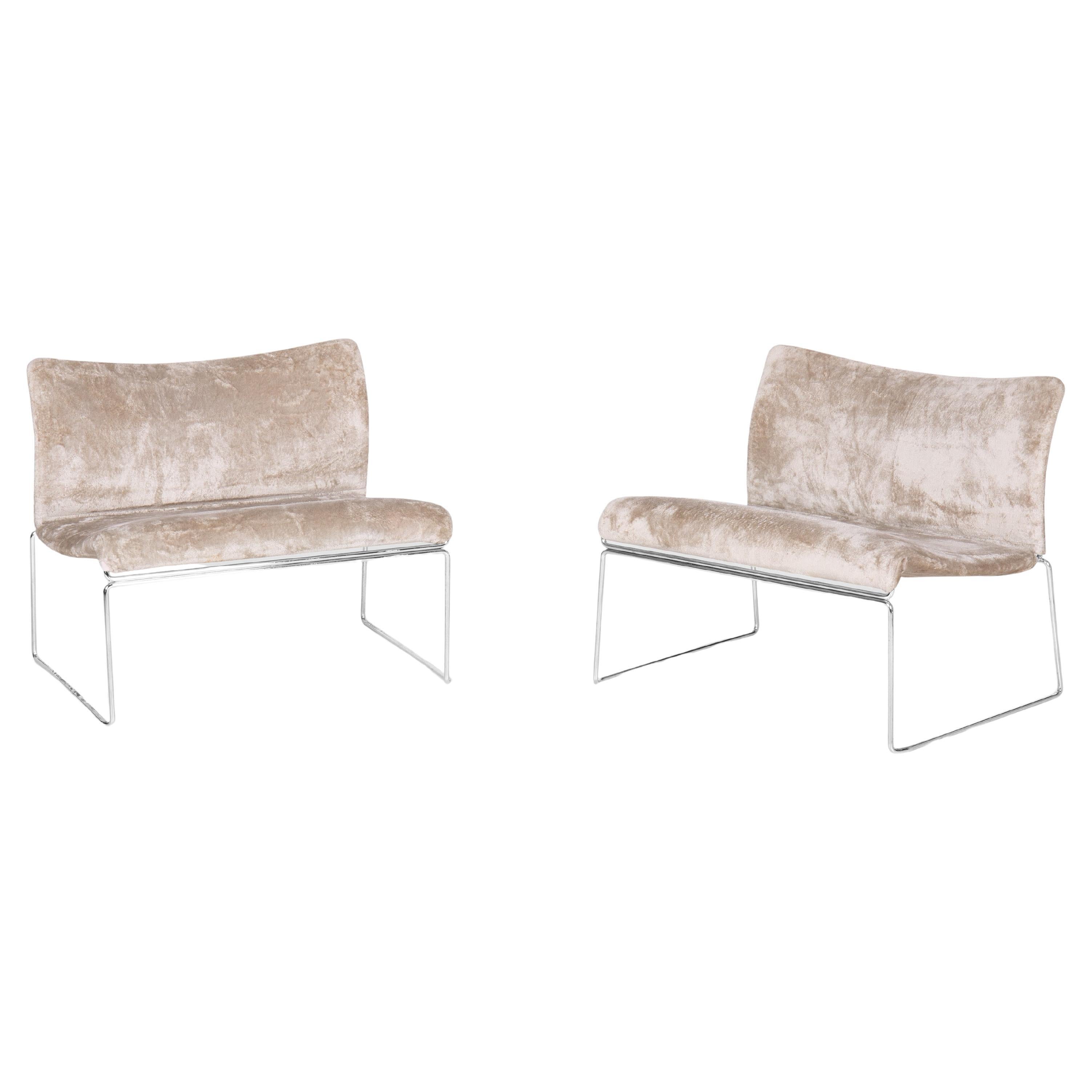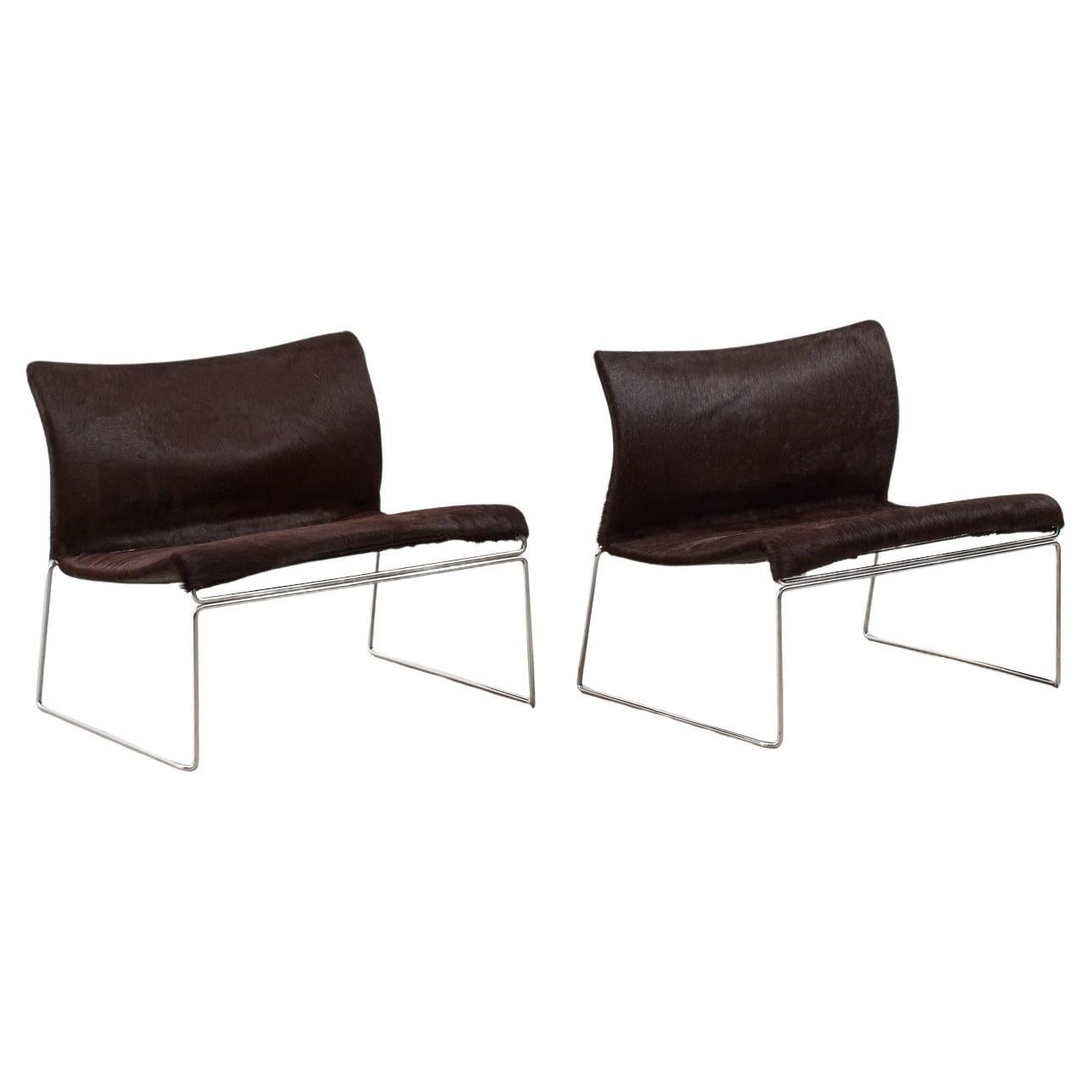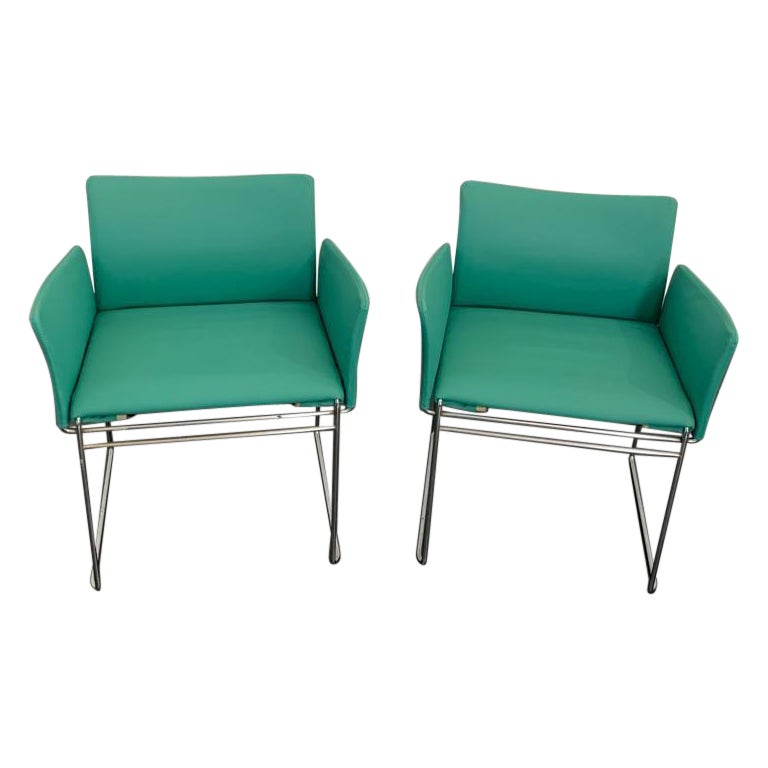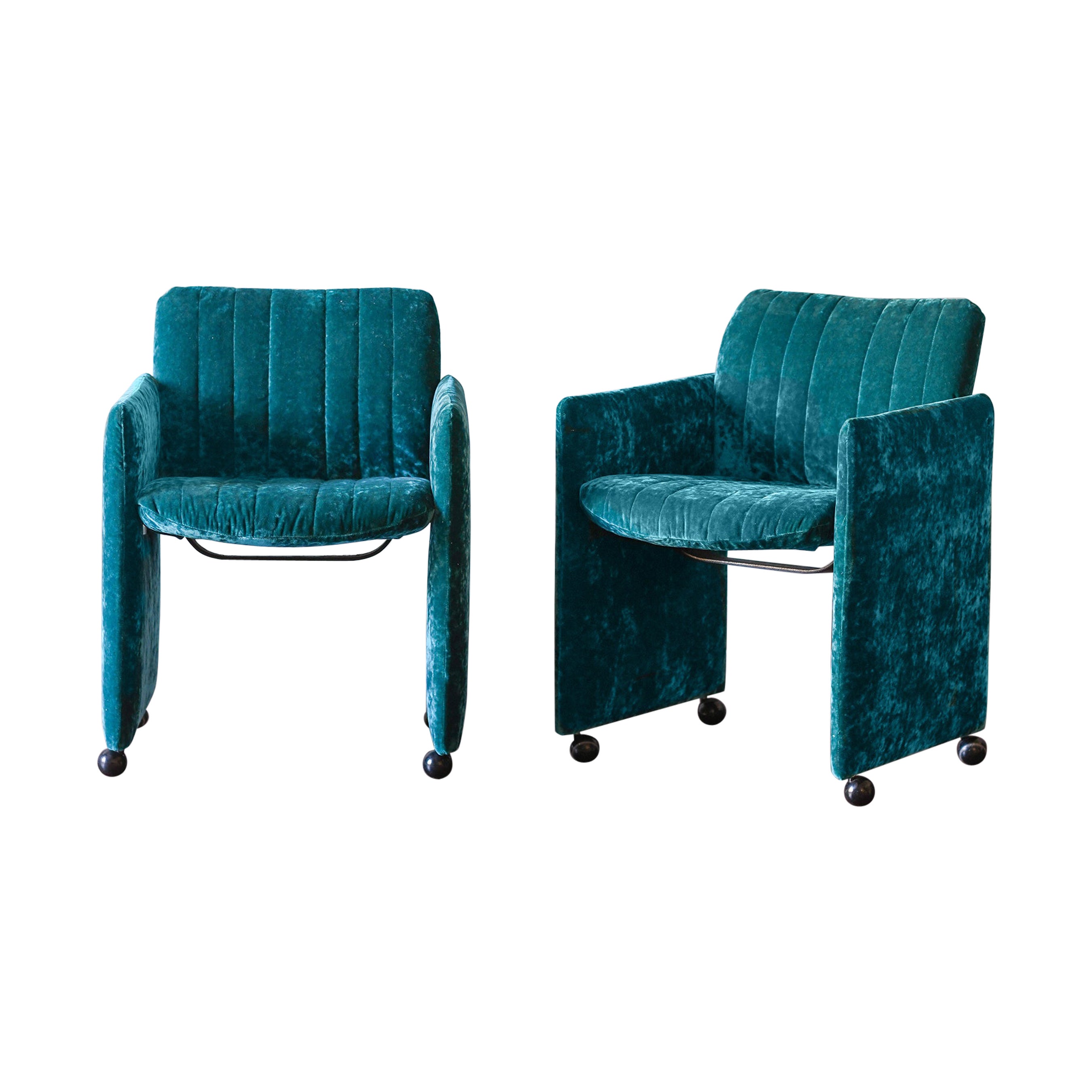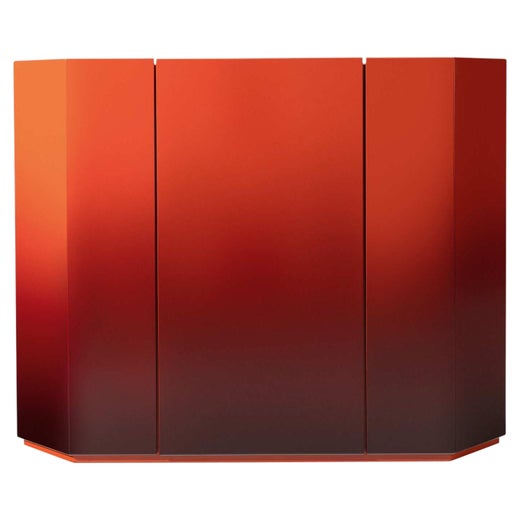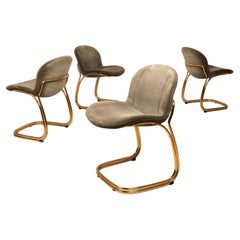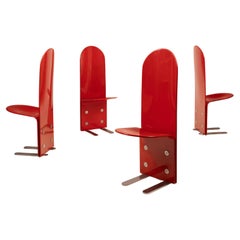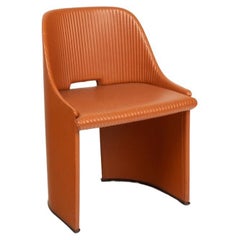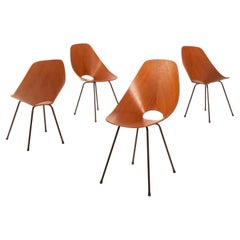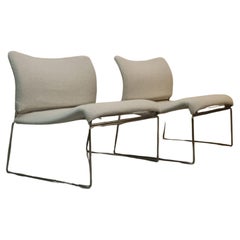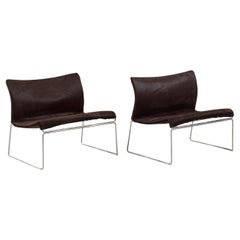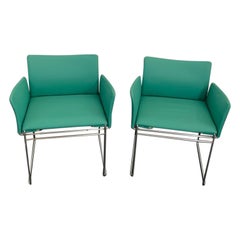Designed by Kazuhide Takahama and produced by Simon International, the “Saghi” armchairs are one of the finest examples of the meeting between Japanese rigor and Italian design vision.
A rare synthesis of formal minimalism and material sensibility, this model earned a place in the permanent collection of the Museum of Modern Art (MoMA) in New York — one of the highest honors in the world of international design.
Crafted in the 1970s, these seats represent a radical statement of sobriety and balance.
The chrome-plated steel frame outlines a pure, suspended volume, while the seat and backrest — gently flexible — are upholstered in the original honey beige medium-pile bouclé fabric, composed of a linen, cotton, and viscose blend. The original paper label is still intact, attesting to the authenticity of the upholstery.
The continuous line between seat and backrest creates a soft and ergonomic profile, with a unique and recognizable gesture.
The armchairs are in original vintage condition, with a solid frame and chrome in good shape, showing only minor localized oxidation.
The fabric displays some signs of age, including a few small stains, but overall retains its uniformity and authentic charm.
Ideal for those seeking certified vintage pieces in well-preserved original condition.
Kazuhide Takahama, a Japanese architect who settled in Italy, collaborated with leading figures in Italian design such as Dino Gavina and Carlo Scarpa. His works are now internationally recognized, and this particular armchair is part of the MoMA’s permanent collection in New York — a testament to his cultural impact and his refined, radical vision.
Product Name: Pair of “Saghi” Armchairs by Kazuhide Takahama for Simon – 1970s
Designer: Kazuhide Takahama
Design Year: 1970s
Style: Japanese minimalism with Italian influence, radical modernism
Main Materials: Chrome-plated steel, original bouclé fabric in linen, cotton, and viscose
Signature Features: Continuous line between seat and backrest, suspended steel structure, original upholstery with vintage paper label, formally essential and recognizable gesture
Dimensions: Width 75 cm Depth 65 cm Height 68 cm
Comfort: Ergonomic seat with a gently contoured backrest offering support and comfort within a minimalist framework
Typical Use: Seating for residential interiors, architectural studios, or galleries
Design Icon: Part of the permanent collection of the MoMA in New York; a defining piece in Takahama’s oeuvre and a landmark of East–West design synergy
Versatility: Ideal for sophisticated interiors and curated design collections; less suited to high-traffic or intensive use environments
Current Condition: Original vintage condition with a solid frame, chrome in good shape with minimal localized oxidation; fabric shows a few small signs of aging but retains original charm
Additional Notes: Please note this item is in excellent vintage condition. Minor signs of age may be present but do not affect its functionality. We invite you to consider these characteristics prior to purchase.
Kazuhide Takahama (1930–2010) was a key figure in the design landscape of the late 20th century, masterfully blending Japanese formal purity with the experimentation of Italian modernism.
Born in Nobeoka, Japan, and trained as an architect in Tokyo, Takahama’s career took a decisive turn in 1957 when he participated in the Milan Triennale. There, he met visionary entrepreneur and patron Dino Gavina, who invited him to move to Italy. Takahama accepted and settled in Bologna, where he quickly became a discreet yet authoritative voice in the emerging Italian design movement.
His style is immediately recognizable: rigorous, silent, essential. Each of his creations reflects a near-meditative approach to space and object, where nothing is superfluous and every detail contributes to a harmonious whole.
In contrast to the decorative tastes of the time, Takahama introduced a new concept of modernity — understated and deeply cultured — which manifested both in furniture and interior architecture.
He worked closely with Gavina and later with Simon International, as well as with renowned firms like Knoll and Cassina, shaping a radical yet refined aesthetic. His creations, including the “Saghi” chairs and the modular “Naeko” system, are now regarded as true design classics, housed in the permanent collections of major institutions such as the Museum of Modern Art in New York and the Centre Pompidou in Paris.
Kazuhide Takahama left behind a profound legacy — a body of work that speaks a universal language suspended between discipline and poetry, between East and West. His furniture does not follow trends; it embodies a timeless sense of beauty, still capable of moving us today through its purity and conceptual intelligence.
Founded in 1968 by Dino Gavina, Simon International is more than a design brand — it is a radical cultural project. Born as a reaction to the growing uniformity of the marketplace, Simon represents Gavina’s most cultured and experimental vision: design as a universal language that merges art, architecture, and philosophy.
After the pioneering experience with Gavina Spa (later acquired by Knoll), Dino Gavina launched Simon with Maria Simoncini, continuing his mission to publish objects that were “necessary,” thoughtful, and intellectually driven.
Simon’s catalog includes figures who embody the complexity and strength of this vision: Kazuhide Takahama, Carlo Scarpa, Man Ray, Marcel Breuer, Ettore Sottsass. Each project is a declaration of independence from commercial design: architectural systems, symbolic furniture, intellectual references, and precious materials interwoven in a continuous exploration of living and the meaning of objects.
Simon is the home of intellectual design — measured gestures, timeless elegance. Its pieces are rare, refined, and full of meaning. Unsurprisingly, many of them are now preserved in the permanent collections of leading museums worldwide, from MoMA to the Centre Pompidou.
In 2013, the brand was acquired by Cassina, which relaunched part of the collection under the “SimonCollezione” series, preserving its identity and historical value. Yet the original Simon vision remains a unique and unrepeatable example of how design can be critical thinking, poetic act, and political vision.
